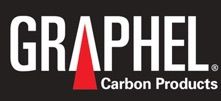Sinker EDM – Inside the Cavity
]
EDM Cavity
As the cut progresses through the work metal a cavity starts to form. The deeper this cavity becomes, the harder it is for fresh dielectric fluid to get into the cavity to remove debris and quench the work piece and electrode. In order to get smooth, even flow of dielectric through the gap, flushing becomes an essential part of the EDM process.
Good flushing allows the work piece particles and eroded electrode particles to be removed from the gap. Flushing also allows fresh dielectric into the gap. Both are necessary to maintain stable cutting and to prevent arcing.
It is the volume of oil moving through the gap that performs particle removal. Turbulence in the tank would indicate not enough volume and too much pressure. The ideal pressure is usually between 3 to 5 psi. Flushing at higher pressure may actually prevent the flow of particles out of the gap and the dielectric renewal in the gap. High pressure also tends to wear the electrode.
The balance of volume and pressure is important. Roughing operations where the gap is large would require high volume and low pressure for good oil flow. Finishing operations where the gap is smaller may necessitate higher pressure to improve the oil flow.
The three basic types of flushing are pressure, suction, and external. The choice of flushing method may be limited by the application. The electrode shape and size may prohibit through the electrode flushing.

This is the most common method of flushing. Pressure flushing forces the dielectric fluid through holes in the electrode into the gap between electrode and workpiece. Fluid and particles flow up the sides of the cavity. Pressure flushing through the electrode helps cool the electrode.

This is the opposite of pressure flushing. Fluid and particles are pulled out of the gap through holes in the electrode or workpiece. This method reduces secondary discharge and tapered walls.

Nozzles or tubes may be used to direct streams of fluid into the gap opening. Fluid and particles are pushed out the opposite side. This is the least desirable method of flushing. Poor flushing conditions can trap particles which may cause DC arcing and pitting.

 Choosing Dielectric Fluid for Sinker EDM Applications
Choosing Dielectric Fluid for Sinker EDM Applications






